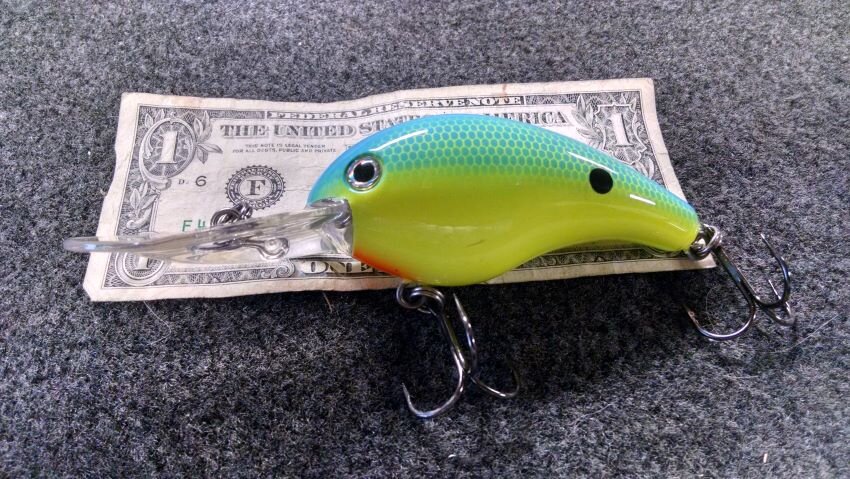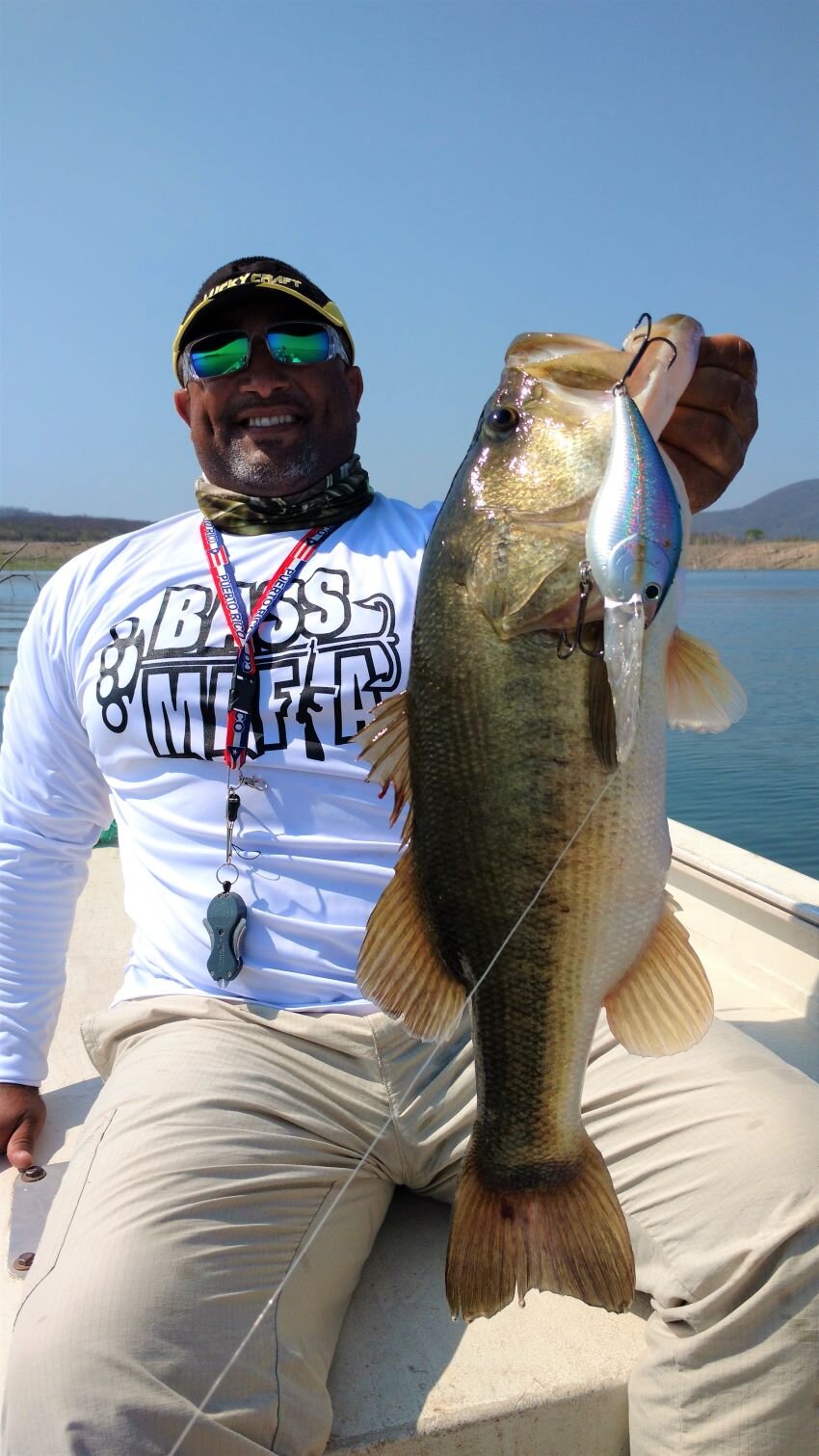Best Ultra-Deep Diving Crankbaits for Offshore Mexican Bass
One of my favorite reasons to head to Mexico in May and June is the opportunity to load the boat using big, deep-diving crankbaits. It’s a technique that I don’t really get to use at home, so that’s a big draw. Furthermore, when fish gang up on offshore structure at El Salto and Picachos, there’s no better way to fire up the school and keep them biting than a big plug. Even if you’re going at other times, it pays to bring some deep diving crankbaits. We’ve caught big bass every month we’ve visited on ultra-deep divers, so if you leave home without them you may miss out on a great bite.
By “ultra-deep,” I mean something that’ll consistently get down past 20 feet. I haven’t been able to accomplish that with a DD22, despite that lure’s name, and some of the old-school baits like the Mann’s 30+ will just flat wear you out if you try to throw them all day. Still, the market is more stuffed with high-quality options than ever before, so bring a variety and make sure they’re the “right” colors.
If You’re Only Going to Get One Deep Diving Crankbait
The standard bearer in this category for us has been the Strike King 10XD. It’s not clear whether it was the first modern lure to inhabit this category, but it clearly defined and popularized it. I caught my biggest El Salto bass on a 10XD in the “Barfish” pattern, which has proven to be one of my favorites. Compared to some of the others, they are ultra-affordable, they consistently run true, and they come in a really wide array of colors.
Other Super-Deep Divers We’ve Used
Clearly the 10XD isn’t the only lure in this category, and now that it has become fairly popular both domestically and abroad some bass may suffer from “10XD fatigue” and be reluctant to bite it. There are some other options that we’ve seen in action:
Our friend Aaron Rygas caught his personal best, a 9.79 pound brute, last November on the 6th Sense Cloud 9 C25 in Gizzard Shad. That one is 3.75” long and weighs 1.9 ounces. They also have a C20 that is 3.5” long and weighs 1.4 ounces.
During the same June 2017 trip when I caught my personal best crankbait fish on a 10XD, my friend Ray Heredia caught some quality fish on the Lucky Craft SKT Mag, the predecessor of the LC 5.5 D20, which comes in a killer Aurora Citrus pattern.
Several members of our circle have also done quite well with the Berkley Dredger series of crankbaits, which come in both 20.5 and 25.5 models. The latter will clearly get down past the 20 foot mark.
Some that Haven’t Worked So Well
The bass of Sinaloa may be fast-growing, hungry and aggressive, but they don’t feed indiscriminately. I’ve put plenty of decent-looking lures in their faces and gotten rejected until I settled on a better option. One guide told me about the ABT series of sinking deep divers (“you can fish a crankbait in 40 feet of water”), so I bought a couple and they never panned out. I also tried the Storm Arashi Deep 25. Despite the fact that I’ve had great success with several other lures from the Arashi lineup, that one didn’t garner any bites. I believe it has been discontinued.
Some Crankbaits We Haven’t Tried Yet
I could stick with proven winners like the 10XD, but that would be distinctly out of character for me. I love to tinker with new tackle and I’m always looking for new options. With that said, here are a few that I’ve yet to try:
Azuma Timmy Horton Z Boss 25 – I bought one of these 4-inch, 2 ounce deep divers last year at Guntersville and it made it to my tackle bag at Anglers Inn, but has yet to hit the water.
Megabass Big M 7.5 – I’m a huge fan of the Megabass artistry, but at $29.99 I’m a little bit scared of this one. The Anglers Inn guides are great at getting lures free from deep snags, but I’m afraid this one would get sacrificed to the fish gods a little bit too quickly.
SPRO Little John Super DD90 – The SPRO Little John 50 has historically been one of my most productive shallow water crankbaits at home, so I’m not quite sure why I haven’t checked out their deepest diver, which is less expensive than the vast majority of the competition in this category.
Colors for Oversized Crankbaits
If you’re headed to Mexico for the first time and need to bring an array of diving lures that’ll hit various depths in a variety of body styles, keep it simple. I think that “matching the hatch” is less important than putting it in the right places, with the right retrieve, and being in the ballpark when it comes to color. Therefore, be sure to cover three key bases when it comes to your primary lures:
Something gaudy, like chartreuse with a powder blue back.
Something natural, like a threadfin or gizzard shad pattern.
Something in between, like a citrus shad.
Eventually you’ll find your confidence colors (some of my favorites in the 10XD are barfish and chartreuse perch) and then you can stock up further on those.
Additional Notes on Big Cranks for Mexican Bass
You may be able to throw these oversized crankbaits on a 7’ medium-heavy baitcasting rod (or even a comparable spinning rod) but having the right tackle makes doing it all day a whole lot easier. That means a 7’6” or 7’11” rod and a reel capable of holding a lot of line. I guarantee you that just about anyone can empty a spool on a smaller bass reel when casting one of these beasts with the wind at their back.
As I’ve stated before, the purists will laugh at my choice of braid for ultra-deep cranking in Mexico, but it’s worked for me and I love the feel of it with my 7’11” cranking rods. Pick the line of your choice. I’d be freaked out throwing them in the trees and rocks on 10- or 12-pound fluorocarbon like some of the pros do.
Be sure to bring extra treble hooks and split ring pliers. They will get dulled by rocks or bent out when removed from gluttonous bass and this single ounce of prevention is worth several pounds of cure. When bass jump these monstrous crankbaits provide them with a lot of leverage to throw the hook, and you can minimize your heartache by always having sharp hook points.
In addition to the required bottle of dipping dye, consider bringing chartreuse and black marking pens. You can use the former if your subdued crankbait needs some extra color for attention, and the latter to draw stripes or a “false eye” on the factory paint job.
This final piece of advice may be the hardest to follow, but hear me out: When you catch a giant on one of these lures, take a few quick pictures and get it back in the water ASAP. Not only is that best for the fish’s long-term chances of survival, but it allows you to get your lure back in the water while the fish are still fired up. That’s a big part of fishing for these schools – the bites come in flurries, and if there’s one grande around there are likely more in the vicinity. Accordingly, get your grip-and-grin photo and get back to casting in hopes of catching a bigger one.







